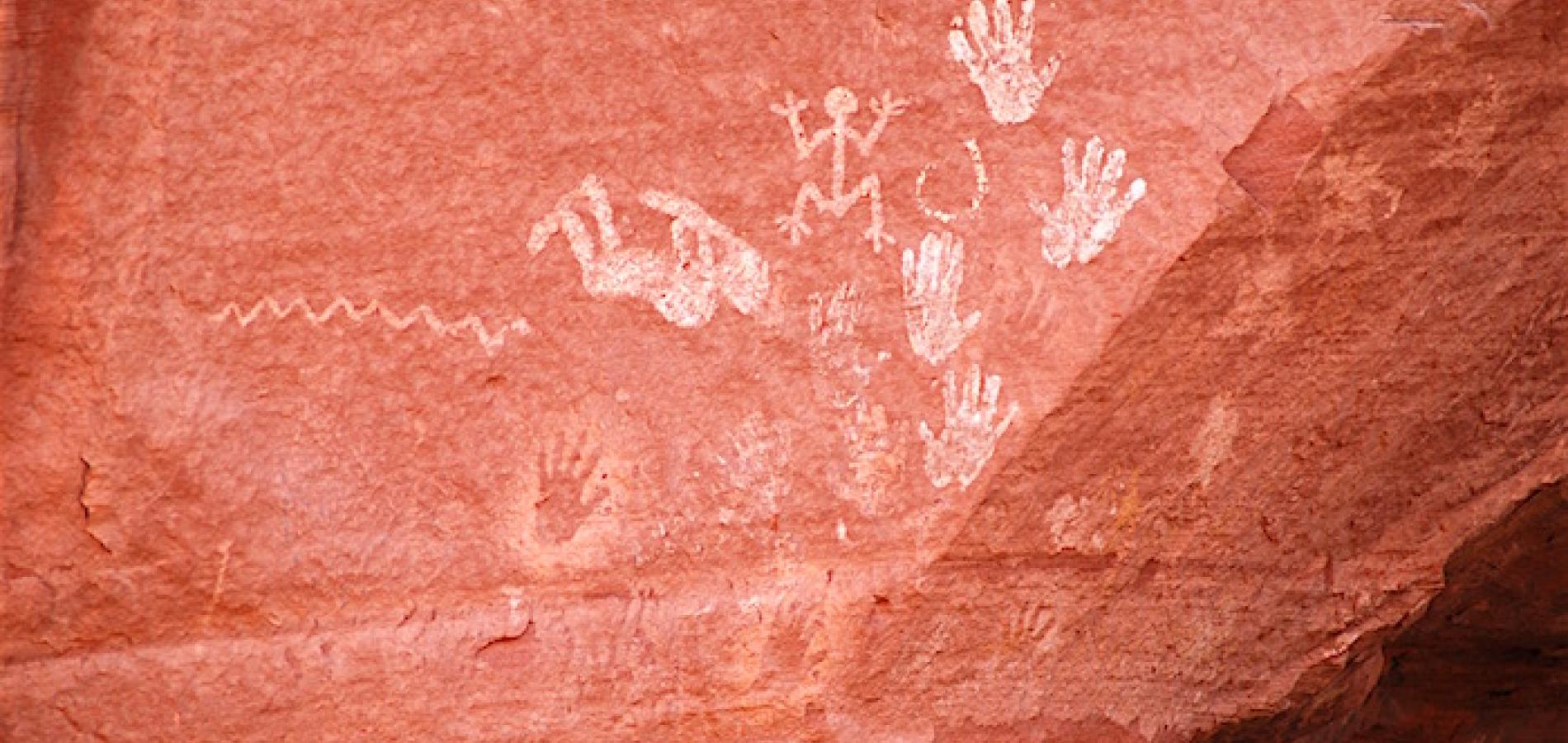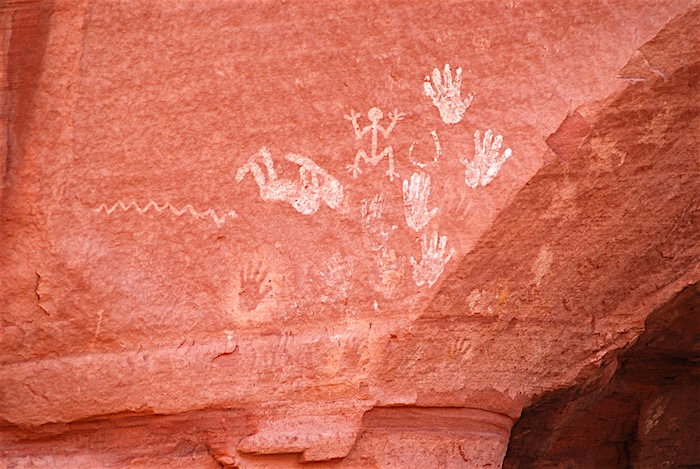Trying to understand how Interior Secretary Ryan Zinke views himself as a conservationist cut from the mold of Theodore Roosevelt is an ongoing challenge. While he wants to bolster the ranks of hunters and anglers, the secretary also wants to shrink some national monuments, allow target shooting on as many public lands as possible, and allow hunters to chum for bears with donuts and greasy loaves of bread.
Secretary Zinke also would toss out an historic agreement aimed at preserving the greater sage grouse and wants to hasten more energy development on public lands even though "(T)hrough the 2015 fiscal year, a record 7,950 drilling permits on federal leases were not being used."
In pro-Trump Utah, the U.S. Bureau of Land Management is being driven by Interior officials to open up more lands for energy development. The agency has gotten so driven that even the Republican governor, Gary Herbert, has asked the BLM to reevaluate its decision to offer leases close to Dinosaur National Monument to "ensure energy developments can successfully coexist with outdoor recreation."
Under Secretary Zinke, the National Park Service did away with a ban on the sale of disposable plastic bottles and scuttled a director's order signed by former Park Service Director Jon Jarvis last year that reaffirmed the agency's “predominant” duty as protecting natural and cultural resources.
With such actions, one has to wonder if Mr. Zinke recalls President Roosevelt's statement that, "(T)he nation behaves well if it treats the natural resources as assets which it must turn over to the next generation increased and not impaired in value."
Mr. Zinke's latest questionable move was a secretarial order he signed Friday to "support sportsmen and enhance wildlife conservation." The order came eight days after the U.S. Fish and Wildlife Service released a report noting that "more than 101 million Americans – a staggering 40 percent of the U.S. population – participated in some form of fishing, hunting, or other wildlife-associated recreation such as birdwatching or outdoor photography."
What caught the attention of the Theodore Roosevelt Conservation Partnership in the report that same day was that the ranks of hunters had declined by 2.2 million since 2011. Secretary Zinke mentioned that Friday in his secretarial order, which he said would aim to "improve wildlife management and conservation, increase access to public lands for hunting, shooting, and fishing, and put a new and a greater emphasis on recruiting and retaining new sportsmen conservationists."
Hunting and fishing have long traditions in America, and concern over the slow decline in hunters is not new. The cause has been parsed by many. Google "decline in hunting" and you'll get 36 million results in less than a second. Some who have analyzed this dilemma have pointed to the growing costs of hunting, the shrinkage of lands to hunt on, the urbanization of the United States, and a lack of interest among younger generations to hunt. The methods used by Fish and Wildlife Service staff to produce these studies also have been questioned, with some in Alaska saying the numbers for their state are dead wrong.
(It shouldn't go unnoted that so concerned are some in Congress about the decline in hunting that the House is considering the questionably labeled Sportsmen’s Heritage And Recreational Enhancement Act that would allow hunters to use armor-piercing bullets and silencers on their weapons.)
Whatever the cause, Mr. Zinke wants to reverse the decline in hunting and is trying everything he possibly can to do so, including quoting President Roosevelt in his order: "In a civilized and cultivated country, wild animals only continue to exist at all when preserved by sportsmen."
Now, across the National Park System, there are myriad destinations for hunters and anglers, whether you want to pursue waterfowl at Cape Hatteras or Cape Lookout national seashores in North Carolina, wild turkeys at Cape Cod National Seashore in Massachusetts, feral pigs or deer at Cumberland Island National Seashore in Georgia or Big Thicket National Preserve (which also has seasons for squirrels, rabbits, and waterfowl) in Texas, or dall sheep and moose in Denali National Park and Preserve in Alaska. And the list goes on. It gets longer when you consider fishing in the park system.
But the secretary wants more access and opportunities, and in his order directed those within the National Park Service and Bureau of Land Management who oversee national monuments to "amend National Monument Management Plans to include or expand hunting, recreational shooting, and fishing opportunities" where possible.
And that provision caught the attention of park advocates.
"This Secretarial Order is a solution in search of a problem," said Kristen Brengel, vice president of government affairs for the National Parks Conservation Association (and a board member of National Parks Traveler). "Our national parks continue to welcome visitors in record-setting numbers to enjoy camping, fishing, hiking, wildlife-viewing, and countless other activities. Not to mention that, from Cape Hatteras National Seashore to Mojave National Preserve, more than 60 of our national park sites currently offer hunting opportunities within park boundaries, and countless sites offer fishing.
“As Secretary Zinke’s press release states, a new U.S. Fish and Wildlife Service survey found 2.2 million fewer hunters in America now than in 2011," she added. "On the other hand, our national parks have seen a 13 percent increase in visitors over the past two years, and welcomed a record-setting 331 million people in 2016. Supply and demand tells us there are already plenty of opportunities for sportsmen and women on millions of acres of public lands. Instead, Secretary Zinke should consider adding more national parks and monuments to the system to meet the public’s increased demand.”
At the Coalition to Protect America's National Parks, Maureen Finnerty not only couldn't think of any hunting or fishing access problems in the National Park System, but wondered if the secretary's order violates "the proclamation orders or legislation that established" national monuments.
"Nowhere in the order is there any discussion of the impact of these activities on the resource," Ms. Finnerty added. "This seems to be a consistent troubling trend of this administration – they promote lots of activities and initiatives, but have shown no concern for the impact of any of them on park resources."
The secretary's desire to see national monuments opened up to target shooting is particularly curious. Considering all the petroglyphs and pictographs in the Southwest that have served as targets over the decades, is this really a good idea? In Utah, one of many states with reports of rock art serving as targets, the BLM last December decided to close 2,000 acres to target shooting in part because of "trigger trash."
Beyond that, while wildfires have plagued the West this summer, prompting Secretary Zinke to tell public land managers that they should contract private companies to reduce fuel loads if they can't handle it, more than a few wildfires have been sparked by target shooting on public lands.
In California, the issue has prompted state officials to urge target shooters to practice their aim "in areas free of dry vegetation — and avoid shooting on hot windy days," conditions not always found on public lands. And in Nevada, officials from Humboldt-Toiyabe National Forest have expressed concern over target shooting and wildfires.
Frankly, it's not clear that the public landscape can handle such an approach to conservation as Secretary Zinke would like to see when it comes to energy development, baiting bears, target shooting, what's best for sage grouse, and his general views on "public-private partnerships" on public lands.











Comments
http://www.cnn.com/2017/09/22/politics/pebble-epa-bristol-bay-invs/index...
Indeed, how much of this nonsense can our public lands absorb?
"Indeed, how much of this nonsense can our public lands absorb? "
From what I see all that has been done so far is avoid a costly lawsuit due to the past administration not following their own procedures. I don't think anyone is a fan of mining and for for good reason BUT. Given mines are a necessary evil, wouldn't we be better served to work towards making them safer for the environment? Or is the hope that all the mining occurs in some third world country where environmental laws are all bu non existent? Which is better for the planet? A mine here or in someone else's backyard?
If, as you say, Trumps administration's management is not terrible but only different from prior administrations, how do we know whether such management of, say, national parks and monument is "good."
"Good" and "Bad" can be subjective. It would be safe to say that his policies/management are less environmentally friendly than the previous administrations policies/management.
In addition to "moving employees, Zinke said he wants to speed up permits for oil drilling, logging and other energy development that now can take years." (AP, 9/25)
Zinke "also said the Endangered Species Act has been 'abused' by environmental groups and bureaucrats alike, which has stalled development."
The ESA really does not stall anything. It is the lack of preparation of developers that leads to stalling.
Not that Fox news is credible on any level, but this headline is relative and frightening with regard to Stinke. http://www.foxnews.com/politics/2017/09/26/zinke-one-third-interior-empl...
Lee & John--
You're looking at this issue at the 35000' level of policy. My sense is that at the boots on the ground level, management actions to improve or sustain the condition of natural resources will no longer simply require a few sentences citing director's orders & policy in the planning documents, but perhaps complete pages citing the laws (Organic Act, Redwoods Act, 1998 Omnibus Act, etc.) as well as new policies, and stating where law overrides policy in the proposed management decisions. A bit more time consuming, but somewhat beneficial in terms of carefully thinking about the resources and management options and the actual law. One can still get slapped down for it, but at the least one can make high-level folks be responsible in writing for arguing their policy vs. the binding law, which does set things up for outside lawsuits if the law is clearly contravened. [I don't see lower-level managers rejecting such planning documents before they become part of the legal record, only higher level managers before actions are taken. But, I could be wrong.] What have we come to when it requires constructing a careful, comprehensive paper trail, no fear, and the hope that you're low enough level to escape the wrath in order to follow "unimpaired for the enhjoyment of future generations"?
My best guess is that NPS resource managers who want to protect their resources will be able to do so with the additional effort, but those who care more about advancing their careers than about the resources will adjust to the previaling winds in favor of exploitation & use.
Smokies Backpacker--
not just Fox, but also WaPo:
https://www.washingtonpost.com/news/energy-environment/wp/2017/09/26/zin...
and E&E news, but that's behind a paywall.
I think that most folks are misunderstanding what he meant by "loyalty to the flag". In context I'm pretty sure that's loyalty to the _command_ flag as in flag officers, not to the stars & stripes US flag.
I doubt Trump was elected because the people were excited over his unwillingness to fill agency posts.
And speaking to his credibility and ethics:
https://www.yahoo.com/news/m/7f06efca-9280-36b8-9bb1-a410e5a6a6f3/ss_zin...
and
http://amp.slate.com/blogs/the_slatest/2017/10/24/whitefish_energy_from_...